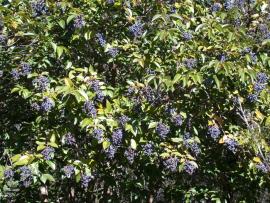Invasive Weed Management on Your Property: Why It Matters and How to Get Started
- belle0581
- Oct 24
- 2 min read
If you own land in the Northern Rivers, chances are you’re no stranger to invasive weeds. They creep in fast, compete with native vegetation, and can quickly take over an otherwise healthy ecosystem. Whether you’re managing a small acreage or a large property, effective weed control is one of the most important steps in helping native rainforest species thrive.

Why weed management matters
Invasive weeds don’t just make a property look untidy - they dramatically impact biodiversity and ecosystem health. Aggressive weeds like Lantana, Camphor Laurel, Devil’s Fig, and Tropical Soda Apple can:
Outcompete native seedlings for sunlight, nutrients, and water.
Prevent rainforest regeneration by forming dense thickets.
Alter soil chemistry and disrupt natural regeneration processes.
Reduce habitat quality for native wildlife.
By controlling these weeds, you’re helping your land return to a more balanced, self-sustaining ecosystem - one where native species can re-establish naturally and provide habitat for birds, insects, and other wildlife.
Start with a plan
Effective weed management starts with understanding what you’re dealing with.
Identify your weeds - Take note of what species are present and how widespread they are. Local councils and Landcare groups often have excellent weed ID guides for your region.
Prioritise problem areas - Tackle the worst infestations first, especially near waterways or where weeds are spreading into native vegetation.
Work from healthy to degraded areas - In bush regeneration, this is known as the “outside-in” approach. Start where native plants are already doing well and expand outward.
Timing is everything
Different weeds require different strategies depending on the season. For example, some species are best removed before seeding, while others respond best to treatment during active growth. A little research (or professional guidance) can help you target the right time to get the best results.
Choose the right control method
There’s no one-size-fits-all solution. Depending on your property and the species, you might use:
Manual removal (hand-pulling or digging) for smaller infestations.
Cut and paint or stem injection for woody weeds like Camphor Laurel.
Mulching or replanting with native species to stabilise soil and prevent regrowth.Minimising soil disturbance is key - it prevents more weed seeds from germinating and helps native plants take hold.
Think long-term: follow-up and maintenance
Weed management isn’t a one-off job. Regular monitoring and follow-up work are essential to keep weeds under control while native vegetation re-establishes. Once canopy cover starts to form, many weeds naturally lose their foothold.
We’re here to help
At ReForest Now, we don’t just plant trees - we also carry out ongoing maintenance and invasive weed management to give young rainforests the best possible start. Our experienced team works with landholders across the Northern Rivers to restore balance to degraded landscapes.
If your property needs professional help with weed control, planting, or ongoing maintenance, we’d love to hear from you.🌱
Get in touch with our team at info@reforestnow.org.au to learn how we can help restore your land and protect native rainforest ecosystems.














